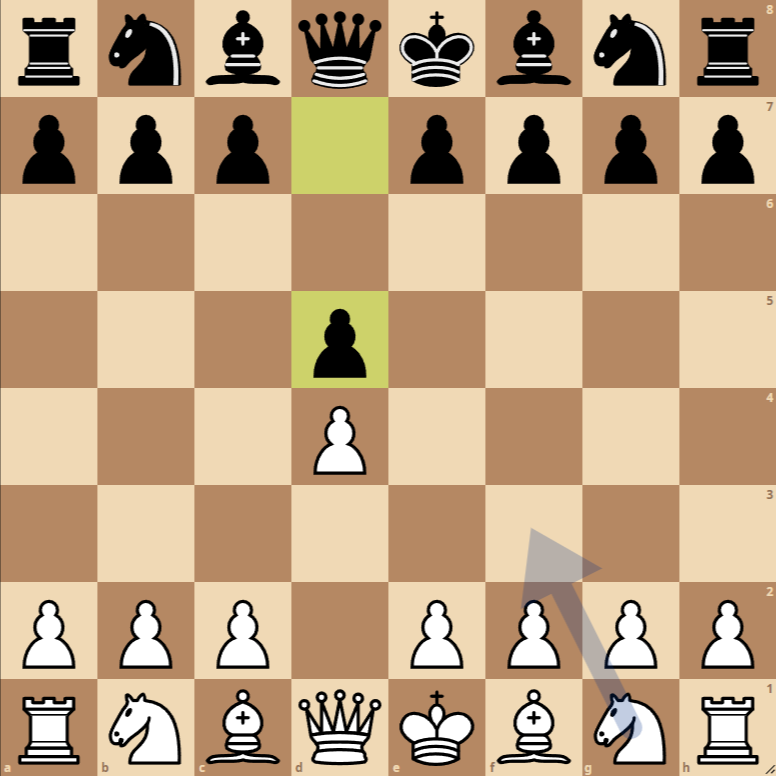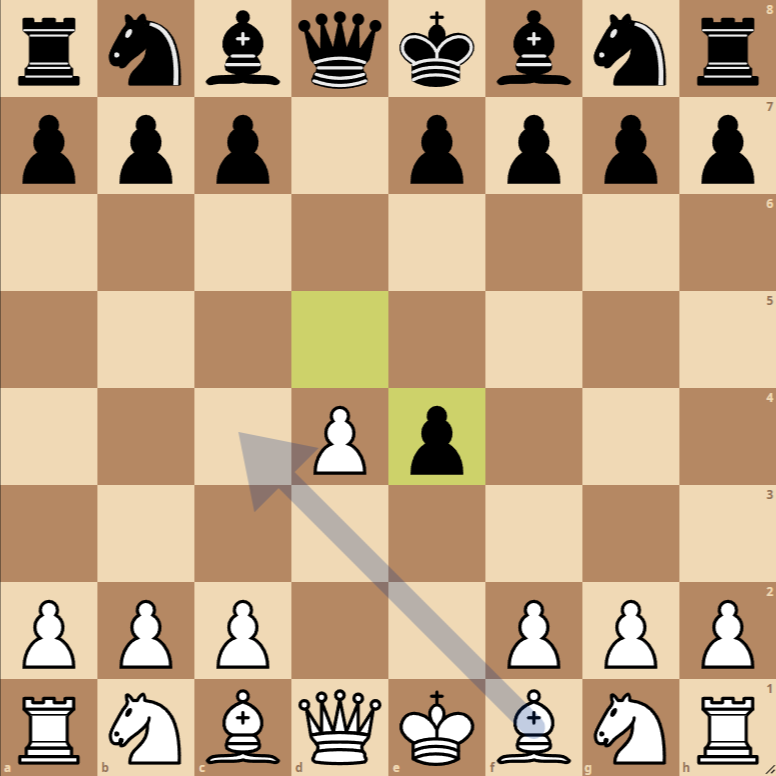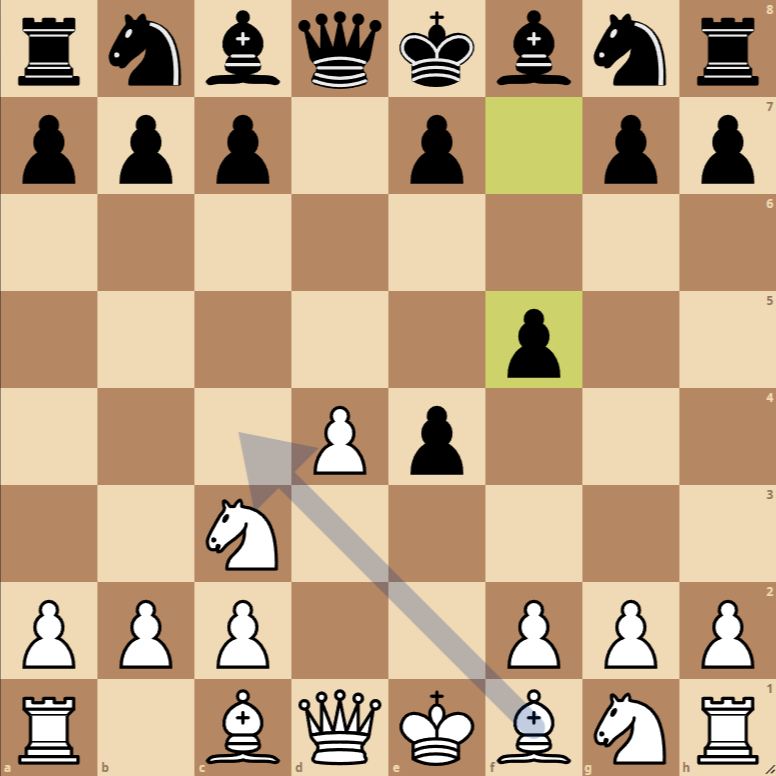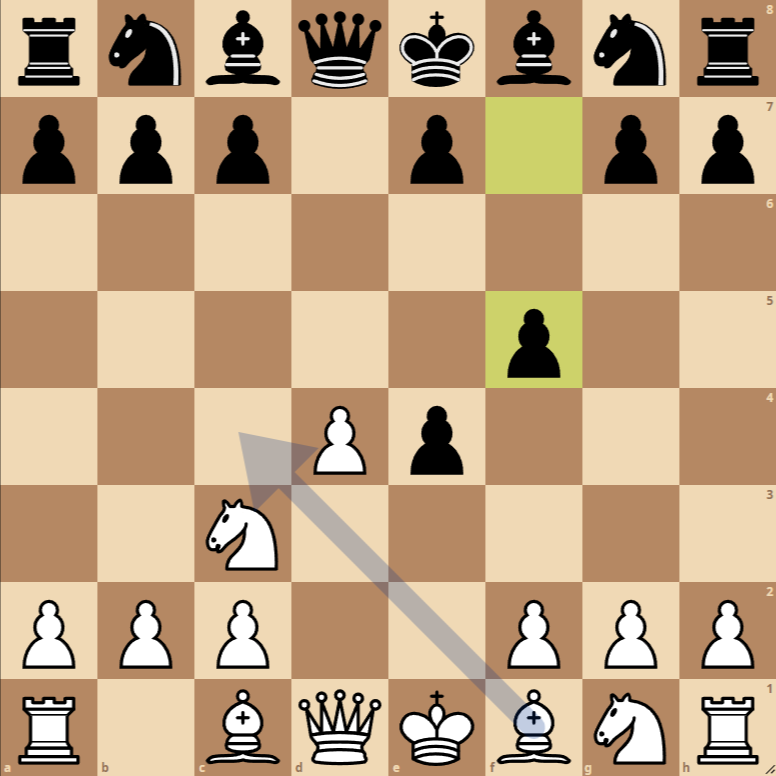How to Play the Blackmar-Diemer Gambit Netherlands Variation



- 1. d4 d5: White opens with the queen’s pawn advancing two squares, aiming to control the center and prepare the development of their minor pieces. Black responds symmetrically, also advancing their queen’s pawn two squares, opposing White’s central control.
- 2. e4: White offers a gambit, proposing to sacrifice the king’s pawn to accelerate the development of their pieces and seek an early tactical advantage.
- dxe4: Black accepts the gambit, capturing the offered pawn. This move aims to maintain material balance while preparing to develop their pieces with a spatial advantage.
- 3. Nc3: White develops their knight to the center, threatening to recapture the lost pawn on e4 and reinforcing their control of the center of the board.
- f5: Black plays an aggressive move, advancing their f-pawn to defend the pawn on e4 and prepare for a potential long castling or a king’s side attack.
Variations of the Blackmar-Diemer Gambit Netherlands Variation
Gambit Rejection
A popular variation includes the rejection of the gambit by Black, choosing not to capture on e4 and maintaining a solid pawn structure, possibly advancing c6 or e6 to strengthen their center without compromising their pawn structure.
Counter-Gambit
Another strategy for Black could be to offer a counter-gambit, advancing c5 in response to White’s e4, aiming to counterattack in the center and unbalance White’s position.
The opening that has developed through the moves 1. d4 d5 2. e4 dxe4 3. Nc3 f5
corresponds to a variation of the Blackmar-Diemer Gambit, specifically the Netherlands Variation. This opening is particularly aggressive and aims to involve both players quickly in a tactical and dynamic game. Below, strategies and tactics for both sides are explored, as well as possible subsequent moves.
Strategies and Tactics
For White:
Main Objective: White aims to open lines for their pieces and generate quick attacks on the opponent’s king. By sacrificing a pawn from the outset, White bets on compensation in the form of accelerated development and control of the center.
Next Moves:
- f3: This move seeks to recapture the sacrificed pawn on e4. Additionally, by playing f3, White prepares the ground for a possible long castling, maintaining pressure in the center and opening lines for the queen and bishop.
- Af4: Develops a piece with threats to the center and the Black king’s side. This move also sets the stage for a possible long castling, allowing White to maintain pressure with their rooks on the central files.
- Ac4: Aims to pressure the weak f7 square right from the start. By placing the bishop on c4, White directly threatens the safety of the Black king and sets the stage for tactics and combinations directed toward the Black king’s castling.
For Black:
Main Objective: Black should focus on completing their development efficiently while countering White’s immediate threats. It is crucial for Black to maintain a solid pawn structure and look for opportunities to counterattack.
Defense and Counterattack: Against f3, Black can consider moving their bishop to e6, paving the way for knight development without obstructing their own f5 pawn. Another option is c6, strengthening the center and preparing for the potential bishop’s exit to a6. Against Af4 or Ac4, Black must be cautious with their moves and consider the possibility of short castling to ensure their king’s safety while activating their pieces to respond to White’s initiatives.
Conclusion
The Netherlands Variation of the Blackmar-Diemer Gambit presents a battlefield filled with complex tactics and strategies from the very beginning of the game. Both sides have opportunities to launch attacks and counterattacks, making this opening an exciting choice for players who enjoy a dynamic and aggressive game. White must capitalize on their initiative and press constantly, while Black must be cunning and resilient, seeking the right moment to counterattack and exploit weaknesses in the White position.

